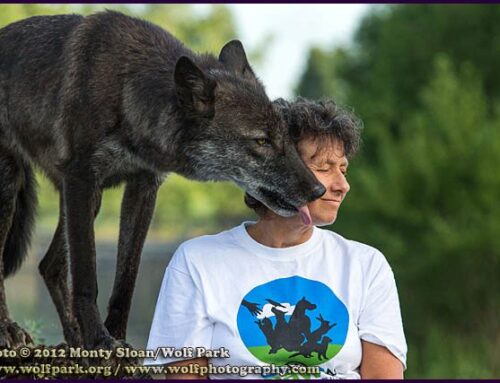I recently heard about a study that was done using functional Magnetic Resonance Imaging (fMRI), a type of specialized MRI scan, which measures the change in blood flow related to neural activity in the brain of humans or other animals. This technology makes it is possible to see which neurons are active in a brain when certain thoughts or emotions occur. The study looked at neurons in the brain’s amygdala, which is responsible for emotional reactions, and visual cortex, which ‘sees’ objects. What they found was that when presented with photographs of images intended to induce positive or negative emotional responses in people, regardless of the content, it was the neurons in the amygdala which reacted first. What this indicates is that even before we ‘know’ what we are looking at, we have already had an emotional response and its accompanying physical reaction.
Since dogs and other animals share these same parts of the brain with us, it’s likely that their brains respond in a similar way to stimuli. And it makes sense. A gazelle grazing on the plains that stops to think about whether or not an animal moving rapidly toward them is a lion, is probably not going to live to graze another day. In much the same way, without any practice at all most of us will leap back if we step off a curb before we noticed that a car was speeding toward us. We can thank our amygdalas for this.
Think about how this effects our fearful dogs and the way they are often handled. By the time a dog appears to ‘see’ whatever scares it, its brain has already had the opportunity to respond negatively to it. In many cases the negative emotional response is accompanied by a negative behavioral response like aggression. We know that dogs get better at any behavior they have the opportunity to repeat, whether we approve of it or not. So each time we put our fearful dogs into situations in which they are exposed to whatever scares them, enough to cause a response, they’re getting better at that response.
Trainers who use aversive techniques to stop or control inappropriate responses in these situations are in effect, closing the barn door after the horses are out. It’s not the behavior they need to stop, it’s the emotional response. Hurting, scaring or threatening a dog to stop it from feeling scared makes no sense. When the focus is on the aggressive display (or the animal’s reluctance to perform a particular behavior), they’ve missed the proverbial boat. This is why desensitization and counter conditioning do help fearful dogs, they change the emotional response an animal has to whatever scares it. The brain is changed so that the first reaction it has is a positive, rather than negative one.
Any of us who have tried or are trying to do this know how slow and tedious the process can be. But the next time you see a trainer responding to a dog’s fear based behavior with the use of force or punishment I hope your own emotional response is a negative one.





